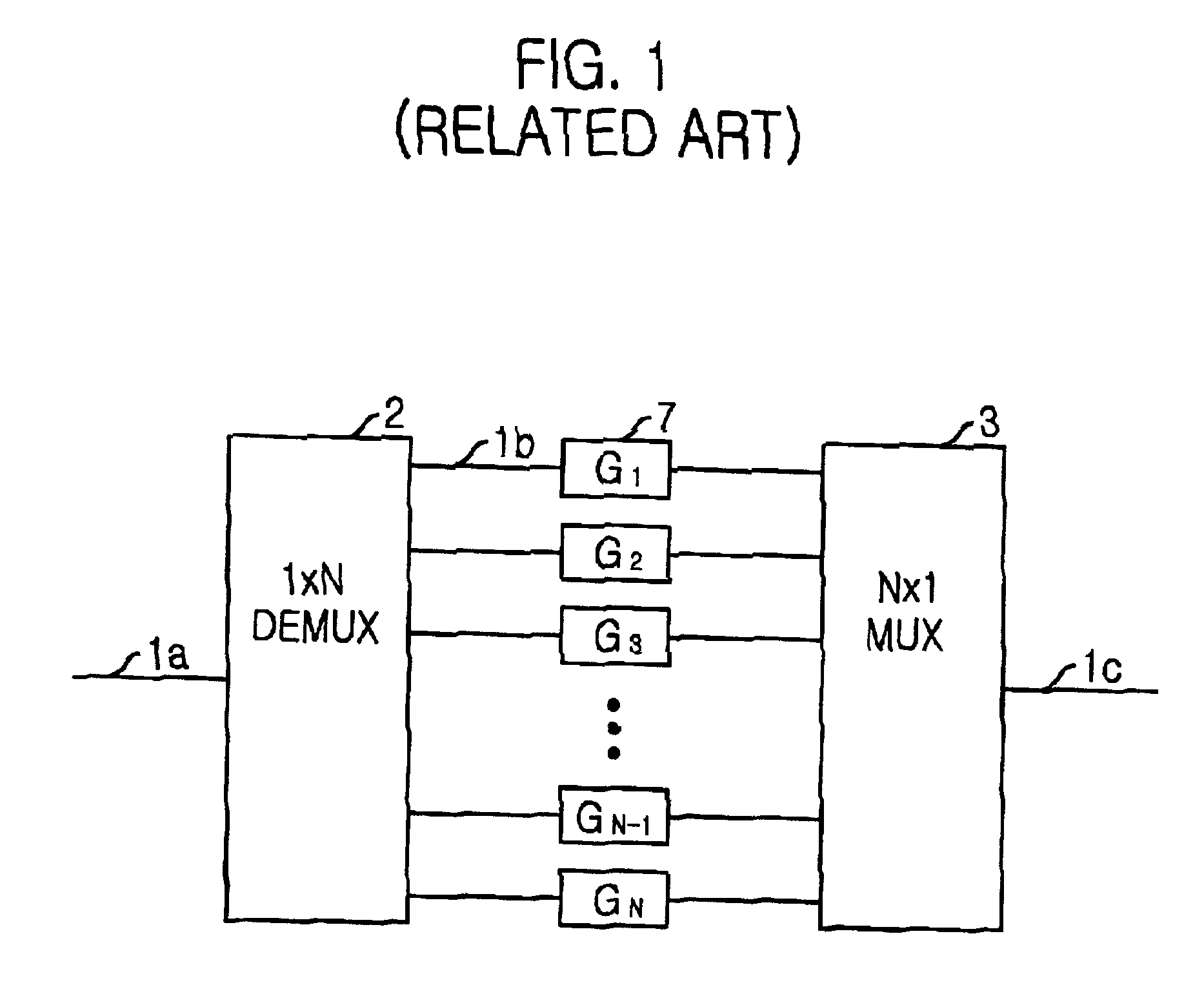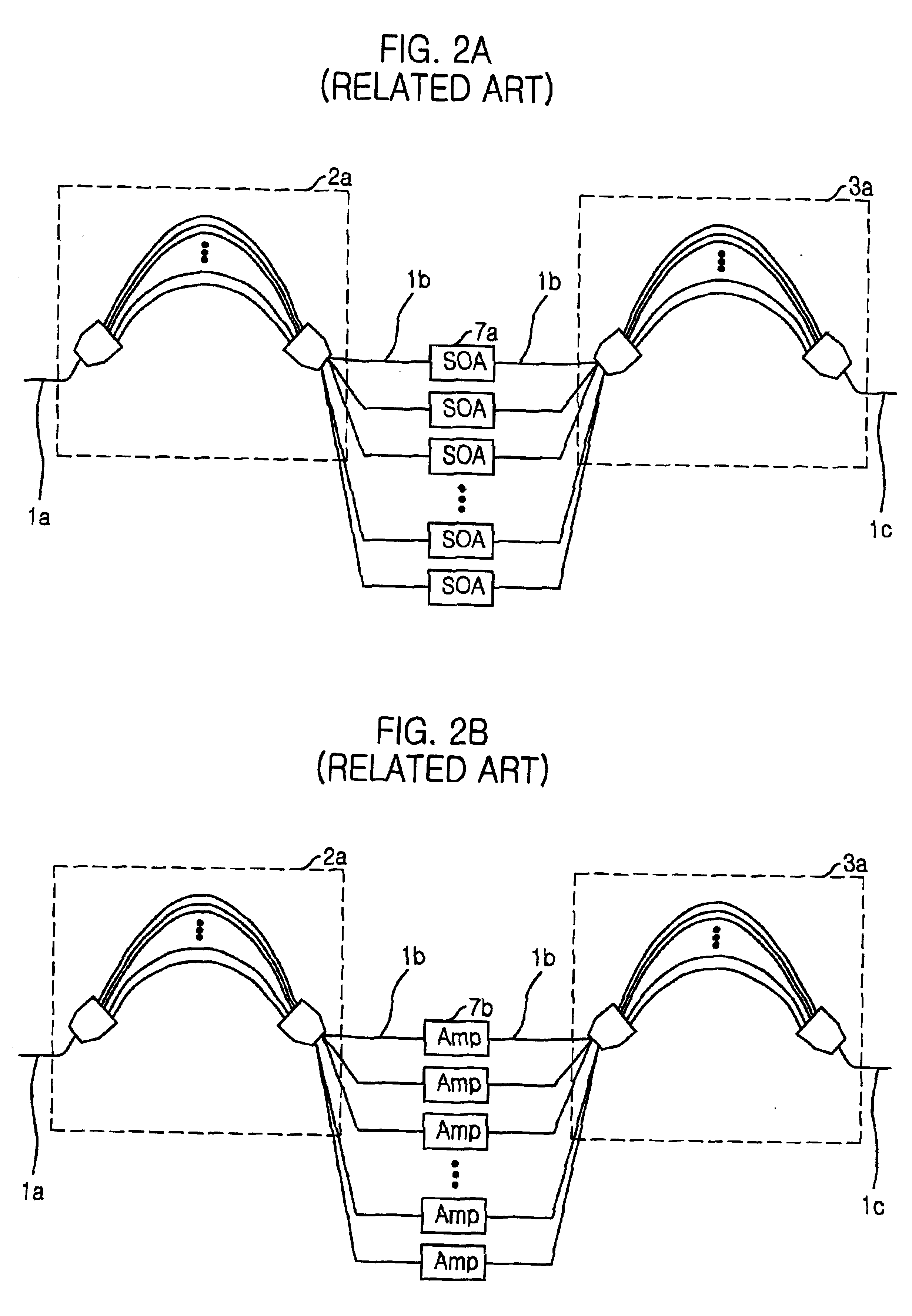High-speed wavelength channel selector and high-speed photonic integrated circuit-type space and wavelength multiplexed channel selector employing the same
- Summary
- Abstract
- Description
- Claims
- Application Information
AI Technical Summary
Benefits of technology
Problems solved by technology
Method used
Image
Examples
Embodiment Construction
Hereinafter, with reference to the accompanying drawings, some preferred embodiments of the present invention will be explained in detail. It should be noticed that, when assigning reference numerals to components illustrated in each drawing, components performing a same or similar function are represented by same or similar reference numerals although they are shown in different drawings.
Referring to FIG. 10, there is shown a block diagram of a high-speed wavelength channel selector B in accordance with the present invention, which is based on a singly integrated scheme of a pair of wavelength demultiplexer 102 and multiplexer 103, a planar waveguide-type electro-optic switch array 104 of electro-optic non-crystalline materials, such as electro-optic polymers or glasses, placed between the demultiplexer 102 and the multiplexer 103, and input and output optical waveguides 101a and 10b located at signal input and output ports, respectively.
The high-speed wavelength channel selector B...
PUM
 Login to View More
Login to View More Abstract
Description
Claims
Application Information
 Login to View More
Login to View More - R&D
- Intellectual Property
- Life Sciences
- Materials
- Tech Scout
- Unparalleled Data Quality
- Higher Quality Content
- 60% Fewer Hallucinations
Browse by: Latest US Patents, China's latest patents, Technical Efficacy Thesaurus, Application Domain, Technology Topic, Popular Technical Reports.
© 2025 PatSnap. All rights reserved.Legal|Privacy policy|Modern Slavery Act Transparency Statement|Sitemap|About US| Contact US: help@patsnap.com



